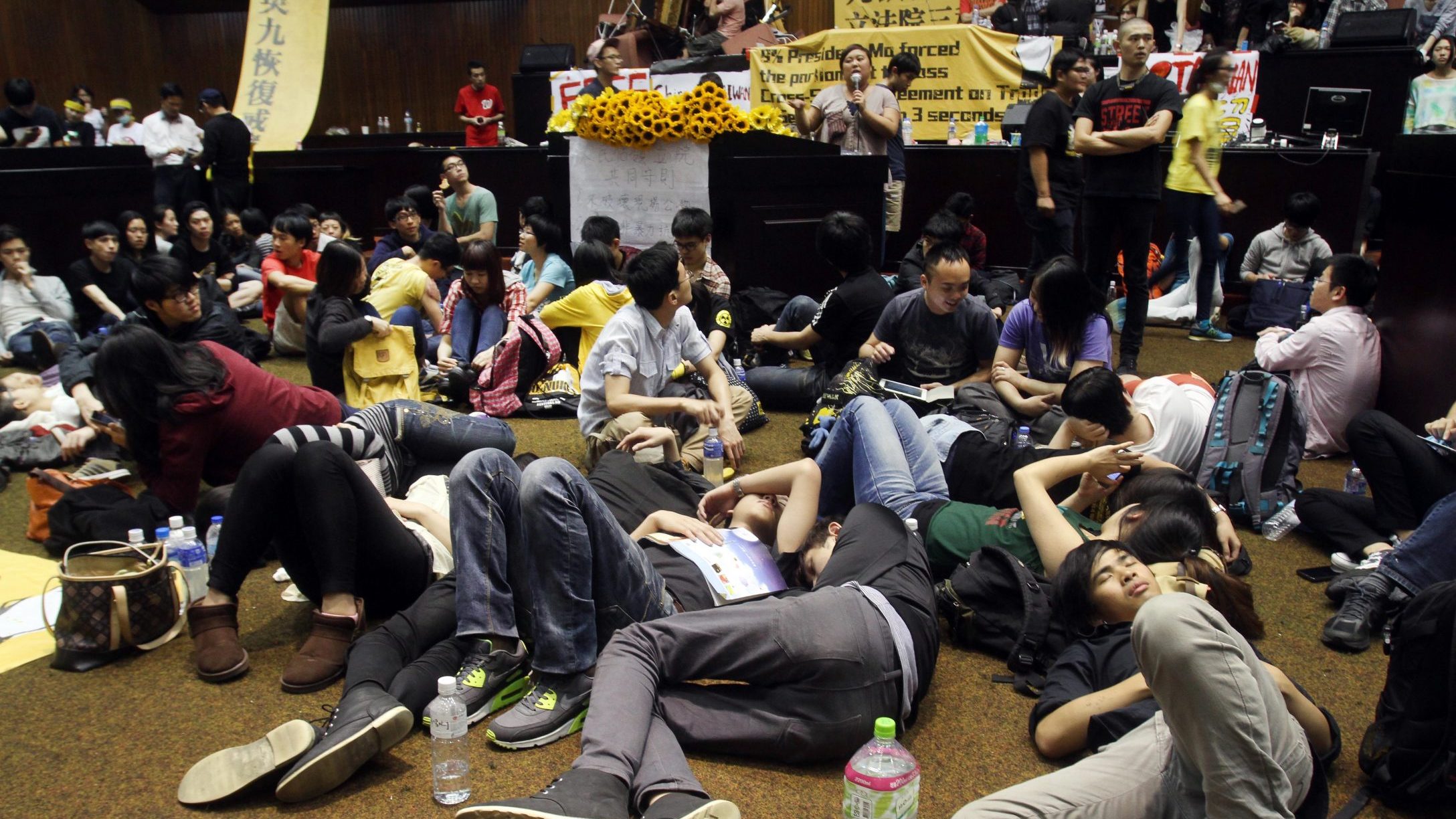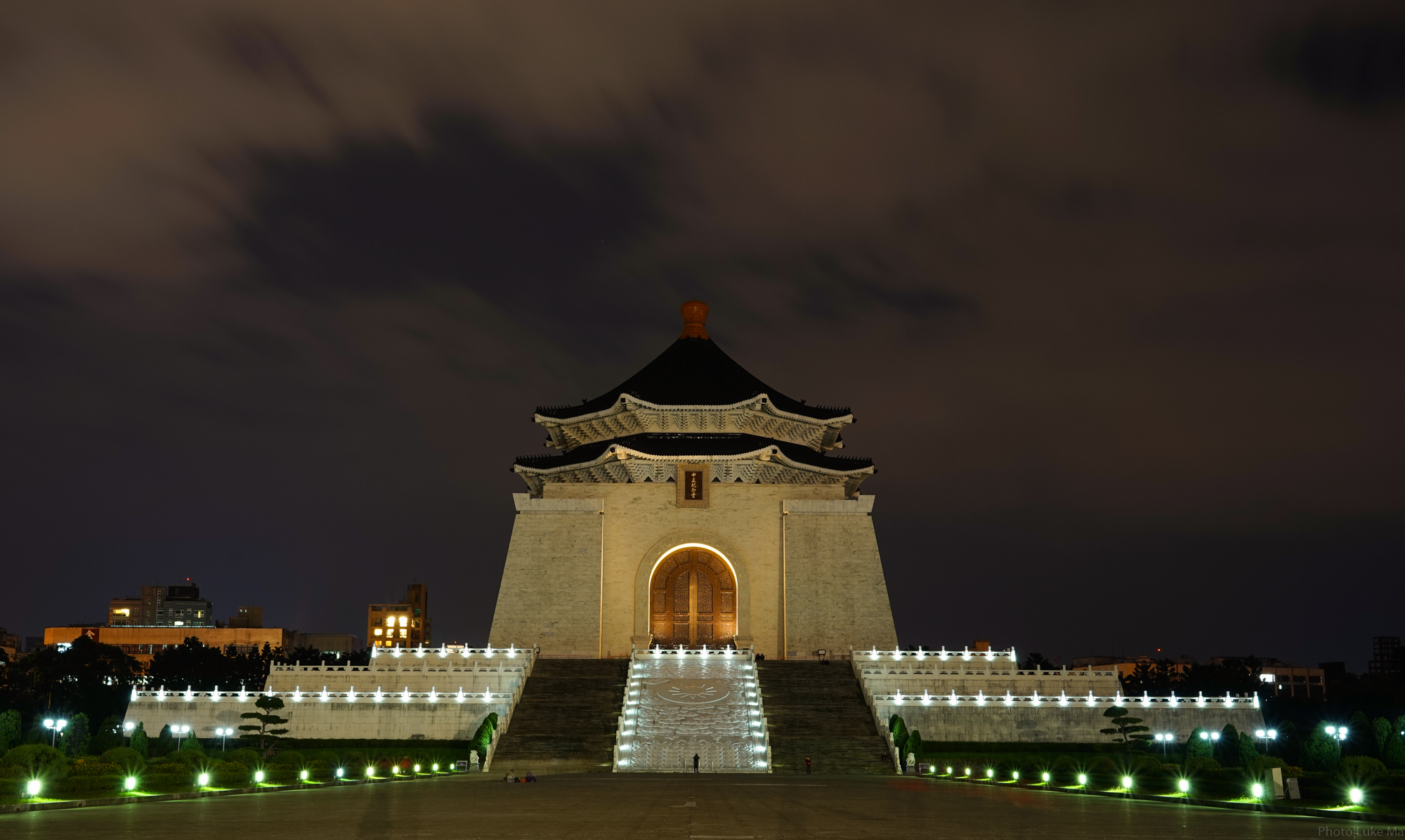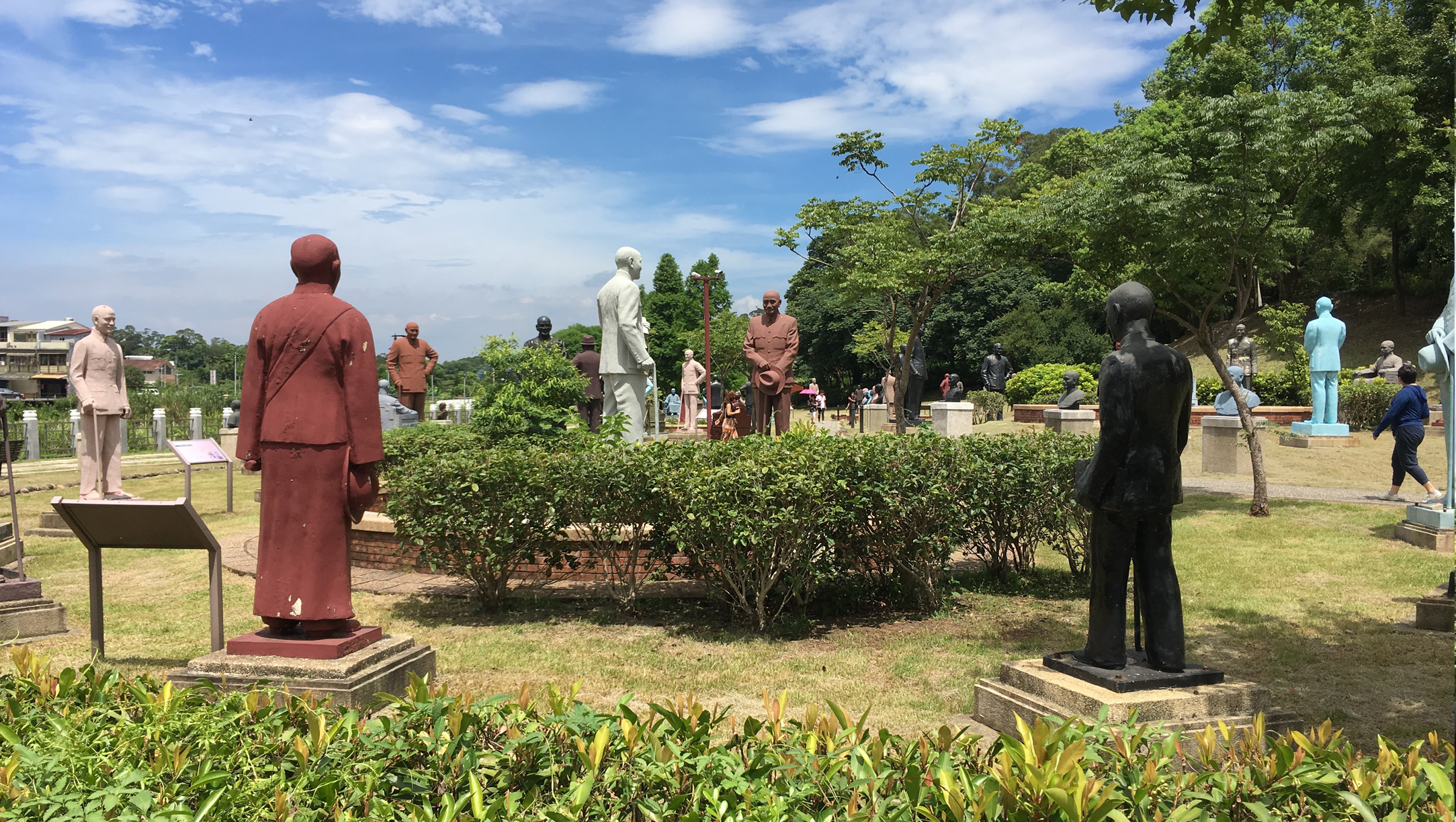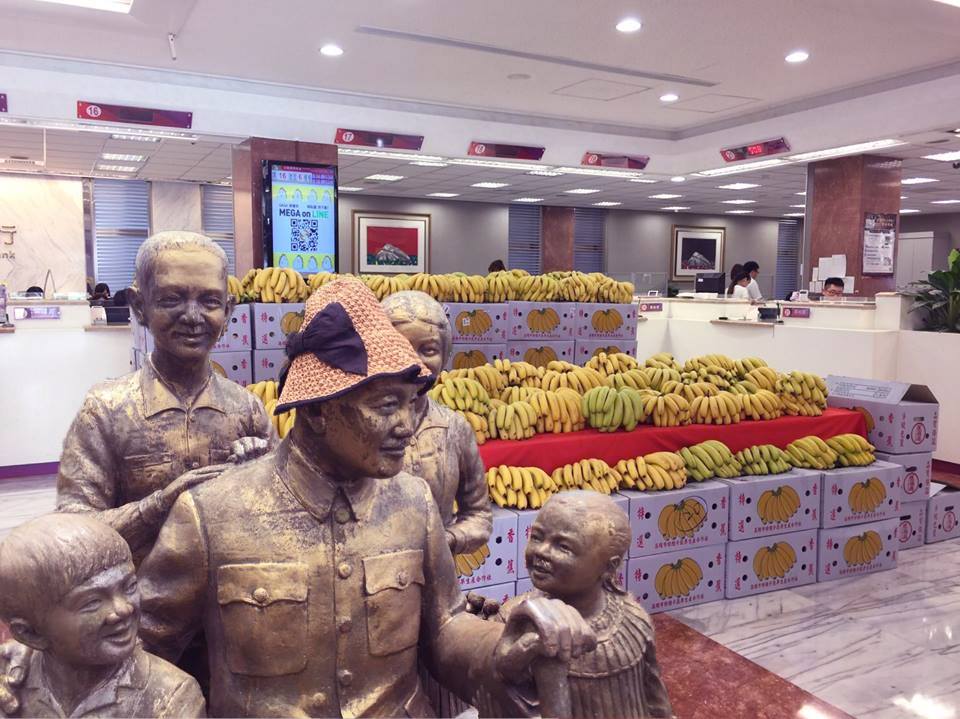In addition to his favorite food, old clothing, calligraphy, paintings, and other artifacts, the museum on the ground floor of the Chiang Kai-Shek Memorial displays two bulletproof cars that used to belong to Chiang.
When I was younger, these cars made a deep impression on me. Although I grew up in America, we always stopped at the Chiang Kai-Shek Memorial during our yearly visits back to Taiwan. My maternal grandfather, who came from China with the Kuomintang after 1945, served for some years as the general manager of the Bank of Taiwan. Family lore has it that he was chauffeured in one of Chiang Kai-Shek’s secondhand bulletproof cars. Had my grandfather been driven around in one of these very cars?
Apart from the chauffeur and car, my family also had a servant, and lived on the second floor of the Bank of Taiwan building on Guling Street itself, not far from the setting of A Brighter Summer Day, Taiwanese New Wave director Edward Yang’s historical epic about the children of Kuomintang families. As a kid, I thought these family stories just represented pride in our heritage.
I’m sure a lot of the stories I heard about my grandfather when I was a child were exaggerated. For example, he was said to have invented the receipt lottery system, still ubiquitous in contemporary Taiwan. I’ve also heard it claimed that my grandfather proposed the founding of the United Daily News, a still-popular newspaper propagating the political views of the Kuomintang in Taiwan, though the paper denies its Kuomintang origins today.
Later it struck me that my family was vaguely Tolstoyan; their stories seemed aimed at recapturing past glories, a form of family mythmaking. But—even though tens of thousands died during the Taiwanese authoritarian period as the result of Chiang’s and the Kuomintang’s actions—my family did take a great deal of pride in their connections to the Lien political dynasty and other members of the “four great families of the Kuomintang,” viewing my grandfather as a “great man of history.”
Some seventy years after the Kuomintang came to Taiwan, my own political views veer sharply away from those of my parents. I was a participant in the 2014 Sunflower Movement against the Kuomintang’s attempt to pass a free trade agreement with China that would have proved deleterious to political freedoms in Taiwan, personally participating in attempts to storm and occupy both the Taiwanese legislature and the building housing the executive branch of government. Later, I became one of the founders of a Taiwanese “left independence” political magazine, New Bloom. I count among my friends individuals who were involved in decapitating or defacing monuments to Chiang Kai-shek—including the Chiang Kai-Shek Memorial—as a way to draw attention to the fact that many traces of the Chiang personality cult still remain in Taiwan. I am generally supportive of such actions. Some might protest that this is disrespectful to the dead, but Chiang himself had no problem murdering dissidents, and even their children and families, and leaving their mutilated corpses in public spaces.

As an East Asian Studies major in college, I found that my family’s claims regarding Chiang did not seem to correspond to what I read in class, which described him almost universally as an authoritarian dictator. With access to the wonders of a university library system for the first time in my life, I took out Chiang’s major theoretical work, China’s Destiny. Like other Chinese political leaders of the time, Chiang patterned himself after the leaders of the Russian Revolution, and felt the need to produce theoretical works to justify his leadership. His praise of European fascist politics throughout the book convinced me that Chiang was indeed an authoritarian dictator.
My family benefited from Kuomintang authoritarianism, but I gradually came to realize that they were also covering up aspects of their colonial history. For example, my maternal family is not actually fully “waishengren”—a term used to refer to the 10% or so of the current population who came to Taiwan with the Kuomintang after its defeat in the Chinese Civil War in 1945. My maternal grandmother was a “benshengren” woman with a working-class background from the southern city of Tainan—“benshengren” referring to those of Han descent whose families had been living in Taiwan before the Kuomintang came. There were periods spanning sometimes hundreds of years during which Taiwan was not completely under the control of any imperial Chinese dynasty.
An age gap of some thirty years separated my maternal grandmother, who was in her twenties when she married, and my maternal grandfather. She was my grandfather’s second wife; his first wife, who was Chinese, had come from China with him. She proved sterile, unable to produce any male heirs to carry on the family name, and that made his taking a second wife permissible. In unguarded moments, sometimes I have even heard family comment jokingly that my grandmother may have been in some way a “loose woman.” The painful history of colonialism, authoritarianism, and patriarchy in Taiwan is thus deeply bound up in the history of my family.
Rather than confront this messy past, it is easier to just insist that those were different times, that those of us living now can’t judge those who lived through far more turbulent periods of history. But many young people of waishengren or partial waishengren descent, like me, identify with more with Taiwan than with China, for lack of any direct experience of China.
As a result, during flare-ups of Taiwanese identity such as the Sunflower Movement, many student participants of waishengren descent clashed with their parents. Others, who experienced a change of ideology later in life, seem to have a deeply internalized sense of guilt regarding their past admiration for an authoritarian regime.
But even if I am not alone in being someone descended from the Kuomintang who repudiates their ideology, it can’t be denied that if the Kuomintang had not come to Taiwan, I and other people of waishengren descent simply would not exist. So it is, then, that Taiwanese people often harbor complicated feelings towards Chiang.
 PHOTO: LUKE,MA VIA FLICKR
PHOTO: LUKE,MA VIA FLICKRWandering around the Chiang Kai-Shek Memorial one night, I encountered the “4-5-6 Movement” protests that took place there weekly. Having visited so many times as a kid, it’s ironic that my participation in Taiwanese social movements protesting resurgent Kuomintang authoritarianism began at the memorial, which, as one of the largest public spaces in Taipei, has decades of history as a protest site.
Earlier this year I went with friends to the “Valley of the Chiangs,” where Chiang and his son, Chiang Ching-Kuo, are buried in a state-run mausoleum. Here, also, over 200 statues of Chiang were gathered in an apparent attempt by New Taipei City mayor Eric Chu of the Kuomintang to rescue the Chiang personality cult: This, despite the fact one frequently sees English-language reports claiming instead that the statues were relocated with a view to leaving the authoritarian period in the past. Originally, both Chiangs, who were father and son dictators, were displayed in glass coffins in the style of Lenin, Stalin, and later Mao, who died a year after Chiang. Debate continues about what to do with the bodies of the Chiangs, and what to do with the Chiang Kai-Shek statues that remain strewn across Taiwan.
I’d long planned to visit the “Valley of the Chiangs,” even though I knew some of my friends would find it strange. For one thing, I thought of this trip as closing the book on that part of my personal history. It would be a weird historical echo of the stories I had heard from my family about how they’d been among those to visit Chiang Kai-Shek’s corpse after his death in 1975, but reenacting this history on my terms. And I can’t deny a large part of me just wanted to go just for kicks.
One of my companions showed up wearing a “Taiwanese independence” shirt, which made me wonder if we would be physically attacked by frenzied Kuomintang supporters when we arrived—something that’s happened to pro-independence young people in the past. But in the event, the “Valley of the Chiangs” was not exactly the imposing monument to a dead dictator I had expected. On the day we arrived, a large inflatable bounce house had been set up by the statues, and Taylor Swift was blasting on a set of loudspeakers. The park was full of small children and old people. A gift shop next to the park sold strange, commodified Chiang memorabilia, such as Chiang Kai-Shek bobbleheads, keychains, tea, and snacks, some of which seemed aimed at trying to make Chiang Kai-Shek “hip” among young people.
 BRIAN HIOE
BRIAN HIOEThe Chiang statues themselves were also strangely tacky. I noticed that they seemed almost like Lego figures, with the same head appearing on different types of bodies. The body of a Chiang statue meant for a college campus would be designed to convey a sense of warmth, while the body of a Chiang statue meant for a military campus would be designed to be imposing. The same head would be placed on both, an indication of how these statues were mass produced.

We got to putting silly hats on the Chiang statues, snapping a photo that I posted on Facebook. Later, a popular Facebook page satirizing Kuomintang political ideology with vaporwave aesthetics made my photo into a meme. (Believe it or not, an entire online subculture exists on Facebook devoting to mocking Kuomintang ideology in Taiwan.)

At the Chiang mausoleums, the staff asked us to bow in front of the coffins when we passed by them. I didn’t. I gave the middle finger in my pocket when I passed by instead, a bit too afraid to do so openly, but also wanting to do something to register my distaste for the Chiang personality cult.
Walking back, we found that both Chiangs had been buried next to a large and ostentatious temple to a cow deity. Was it that Chiang had some fondness for cows? Apparently, in the 1970s, a family had been alerted to a fire, woken up by the mooing of a cow. So the temple was built in thanks, despite its location next to the Chiang mausoleums. Unfortunately, it was closed that day.
After our visit, I learned that there is a literal temple devoted to worshipping Chiang Kai-Shek as a god somewhere in Taiwan. That wasn’t too surprising; Chinese and Taiwanese history are full of political leaders who were later worshipped as deities. I guess I’ll have to visit that, too, before it disappears.






